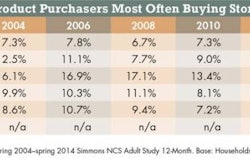“Rendering is recycling.” That’s the tag line heading brochures, infographics and other materials from the National Renderers Association (NRA), and it was the main theme of a presentation by Jessica Meisinger, PhD, director of education, science and communication for NRA and the Fats and Protein Research Foundation. She spoke at the 2014 Feed and Pet Food Joint Conference held by the Pet Food Institute and National Grain & Feed Association October 7-9 in Omaha, Nebraska, USA.
Meisinger participated in a session on sustainability in petfood and feed, along with representatives of the Nature Conservancy and the Sustainability Consortium. “Without rendering, all available space in US landfills would be used within four years,” she said, adding that NRA—which she referred to as “the other NRA”—is now pushing this type of message out to consumers, most of whom don't even know what rendering is or how common it is in petfood.
That awareness and education is most sorely needed with the term “by-product”—at least in my opinion, and Meisinger seems to agree. When asked (along with her fellow speakers) how to best move sustainability forward in the petfood and feed industries, she had the most memorable line of the day: “Stop negative marketing in petfood about rendered products.” Indeed.
As she explained, a by-product is simply a secondary product obtained during the manufacture of a principal commodity. Humans eat many by-products and don't even realize it, she added.
In fact, Meisinger said, though rendering has been around since the ancient Egyptians used animal fat for soap, it has been known as the “invisible industry” since it arose as an actual industry with increased livestock production in the US. “Until recently, that’s how everyone wanted it,” she explained about the invisibility. But now, NRA and other stakeholders in the industry, and the industries it supports, see an opportunity to promote the benefits of rendering.
The amount of livestock produced in North America—combined with cultural and eating practices that result in only about 50% of that livestock being used for human food—leaves about 50 billion pounds of meat that would otherwise go to waste if not for rendering. Which is possibly and uniquely only a North American industry because in many other countries and parts of the world, all livestock is used for human consumption. “North American production for North American consumption—rendering is sustainable in that way, too,” Meisinger said.
The materials that go into the rendering process include offal or viscera, bones, fats, trimmings, blood, feathers and other parts of livestock that we picky humans (at least in North America) deem too gross to eat; but it also includes restaurant grease and food materials that restaurants and grocery stores cannot sell within a certain timeframe and would otherwise go to waste. Contrary to some misperceptions and rampant Internet rumors, only about 3-4% of rendered material comes from dead animals.
What comes out of the other end of the process includes materials that commonly show up on the labels of petfoods, such as meat meals and bonemeal, tallow, poultry fat and feather meal—those by-products that have been demonized in so many corners, including by petfood manufacturers and marketers themselves. (About a third of rendered products go into petfood and treats, a third into aquaculture and a third into biofuels, Meisinger said, with the remaining 1% going into all sorts of products.)
Yet, in making the case for using these rendered ingredients in petfood, Meisinger pointed out the obvious: Cats are carnivores and dogs naturally eat meat. Thus, rendered animal products are highly palatable to cats and dogs and highly nutritious; in fact, she said, poultry by-product meal is more nutritious than poultry meal, which is more nutritious than flesh. Has any petfood manufacturer every tried explaining that to pet owners?
Other benefits of rendered products include:
- They’re environmentally friendly; while the rendering process has a large carbon footprint, it’s actually carbon positive because the recycling of fat and protein materials reduces greenhouse gases significantly.
- Rendering is much safer and sustainable than other animal disposal methods.
- The process destroys many pathogens, so it helps from a food safety standpoint, too.
- Using rendered products decreases the use of virgin ingredients, lowering the level of competition with the human food industry for those and other ingredients.
After the session, I asked Meisinger if she thought using a term other than “by-product” would help consumers better accept the use of rendered products in their pets’ food. She responded that the term is so widely used, it would be difficult (and might even seem deceptive to some) to replace it, adding that she and her colleagues often debate whether “co-product” is a better term. (Apparently, they can’t even reach consensus.)
What’s really necessary and probably the best option, she believes, is education—thus, the NRA campaign on how rendering is recycling. If you’d like to join in that education effort—at the very least, educate your own customers and potential customers—inform yourself, then start extolling the benefits of rendered ingredients. To start, see NRA’s infographic.
While many consumers often profess that they want more sustainable products and wish companies followed “green” practices, they don’t always put their money where their mouth is and actually buy such products, especially if those products cost more. But that’s not the case here; petfoods using rendered ingredients typically do not cost more.
And, as Gen X and Y, plus Millennials, start entering the ranks of pet ownership, I believe these younger generations are more receptive to learning about and buying environmentally friendly ingredients and products. What’s more, today’s highly involved pet owners, no matter which generation they belong to, should respond to the message about how nutritious these ingredients are.

















